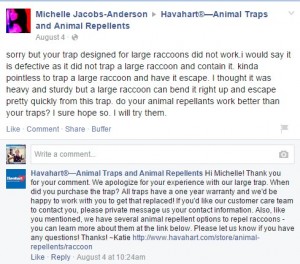Starting a business is hard. Between raising funds, networking, completing orders and selling products, you might think you couldn’t possibly manage anything else. But public relations is an important part of any successful startup and shouldn’t be put off till you have the funds or time for it.
Below is an easy-to-follow plan for handling your startup’s PR.
Craft Your Messages
If there is one important practice to steal from PR for your startup it’s how to craft your key messages. Developing key messages will help reveal your company’s identity making it easier for customers to remember you, the media to talk about you, and even future employees to want to work for you.
Each message you create should distinctly answer these questions:
- Why my product/service is better than others?
- What problem does my product/service solve for my specific target audience?
- What are the core values and mission of my company?
Don’t try to cram every bit of information into one mission statement, create separate messages for different target audience or products. Drop the jargon and fancy wording and instead just be personable, simple and real to your publics.
You can use the below template by Adeo Ressi of Founder’s Institute to communicate you message into a one sentence pitch:
My Company <name> is developing <product or service> to help <target audience> <solve a problem> with <secret sauce>.
Generate Buzz
When it comes to buzz, you have just as much opportunity as the big dogs since we all use the same digital channels. Keeping up with social media can be time consuming and I know plenty of startups who hire virtual assistants that they trust to manage it. Just make sure you communicate to them what should and should not be posted or done online.
Here are a few guidelines to follow to generate buzz about your company:
- Reach out to people who have influence over your target audience
- Use pictures and graphics to visually get your messages across
- Focus on helping your consumers vs. talking about your products
- Develop a voice and style that fits your company and will appeal to your target audience
- Establish your brand on key platforms that are often visited by your audience
- Take advantage of trending topics and events
Jumping on bandwagons at the right time in the right way is one of the best ways to generate buzz for your company. For example, CJ Pony Parts, a startup that sells Mustang parts, put their own spin on the ALS Ice Bucket Challenge during its peak of popularity.

Not only did it get thousands of views but also convinced a consumer (and probably many more) to give their business to CJ Pony Parts.
Crisis Communication
There are many high risk factors to starting your own business. It’s important to establish who is designated to respond to the media or customer during a crisis or even an issue that could escalate to a crisis.
A “crisis” is considered an event that threatens to do long-term damage to your company either financially or in reputation.
A hot-bed for crisis to pop up is social media. It’s important to create a social media crisis plan, especially if you have your virtual assistant managing it, which details how to respond in certain situations.

In the example above Havahart immediately responded with a solution (send it back using the warranty) and gave the concerned customer a way to contact their customer care team through a private DM. Create a template for your social media manager to follow in regards to what to include when a customer complains online.
Make a Hit List
Do some digging to discover the top 20-30 media placements that would be valuable to have your company’s story featured in the next year. Keep your choices realistic and geared towards where you think your target audience would read, listen or watch. Don’t limit your choices to just newspapers. Perhaps it’s a local radio talk show, a podcast or even just a blog that you know your consumers love.
Next, gather in an excel doc the most relevant journalist or person you would have to contact in order to make it happen. In the doc include: their name, articles they wrote that would be similar to your’s, and any notes to my your email to them personable.
Build Relationships
As the founder of your company, you have an advantage over a PR pro when it comes to media relations. A journalist is more likely to hear you out and consider your story because you’re an actual expert and founder of the company.
But before you pitch your journalist, it’s crucial to establish a good relationship with them. Follow them on Twitter, see what story they are currently working on, and send them tips that could help their story even if it doesn’t relate to your company.
The goal is for you to become a resource that they can call. When it comes to big launches or events, I suggest starting the media relations process six months in advance to give you enough time to build those connections to the specific journalist you think would be interested.
Managing the Spread of Information
If I could sum up public relations in a phrase this would be it—managing the spread of information.
Think of it as frosting, it’s the prettiest part of the cake and has to be perfectly spread and decorated in order to sell. It’s the first thing people are going to see and is a determining factor on whether or not they will buy it.
Don’t forget, there’s frosting in between the layers of a cake as well to make it all stick together. Disseminating information to your employees and stakeholders is just as important as communicating to customers.
Keep your communication clear and concise and don’t forget to utilize your key messages you created in step one.
Monitor Online Conversations
The last part to DIY public relations is monitoring what’s being said about you. This is critical for startups and could save you in the long run as you continue to shape your company and products.
Set up Google Alerts to track your name, company’s name and variations, and any important employees’ names as well. Respond to negative reviews or feedback and try to make the situation right (but also know when not responding might be best).
Public relations is a two-way street. It’s just as important to send out the right messages as it is to listen and apply what your audience is saying about you
__________________________________________________________
 Alicia Lawrence is a content coordinator for WebpageFX and is a frequent contributor to Spin Sucks, PR Daily and Entrepreneur. She helps her clients in the areas of Online PR, content marketing and SEO. Follow her on Twitter @Alicia_Lw.
Alicia Lawrence is a content coordinator for WebpageFX and is a frequent contributor to Spin Sucks, PR Daily and Entrepreneur. She helps her clients in the areas of Online PR, content marketing and SEO. Follow her on Twitter @Alicia_Lw.





